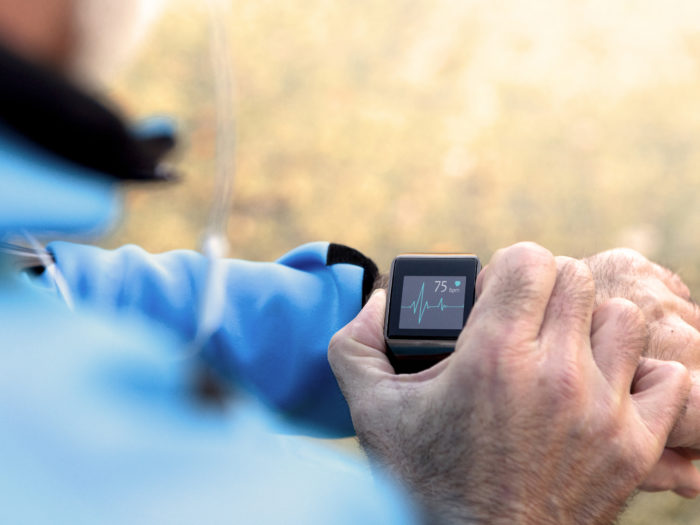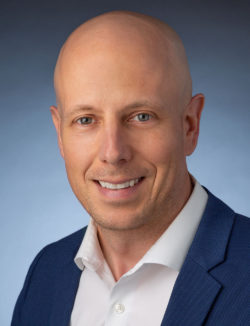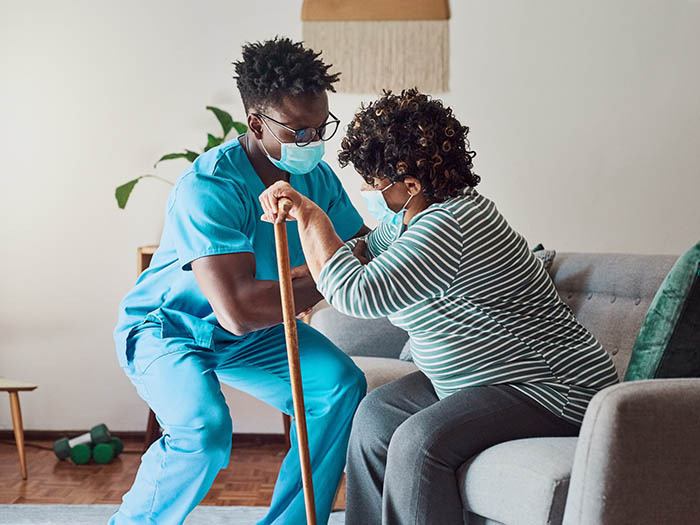Sponsored Content by Concentra
Why You Need a Clinical Partner to Help Implement Your Workplace Wearables Program

It’s clear, workplace wearables are one of many new technologies that can help improve worker safety and prevent costly injuries.
The devices, which can be worn on safety vests, belts, wrists or other parts of a worker’s clothing, detect a worker’s movement to ensure they’re using proper ergonomic movements. Approximately the size of a credit card, these devices will vibrate, blink, or beep if they detect an improper motion, alerting the worker so that they can correct their behavior.
When integrated with an employer’s onsite health program, wearables can play a key role. In an onsite setting, wearables provide data that helps clinicians pinpoint unsafe movements specifically related to jobs being performed.
“Our clinicians take a holistic view of wearables data and then they can leverage their clinical skills to evaluate the job function and actions of the employee,” said Mike Rhine, SVP, Chief Operating Officer, Onsites, Concentra. “They also use the data collected by wearables, combined with their clinical skill to provide a different level of safety education than the device data alone is able to do.”
How a Clinical Perspective Enhances Your Wearables Program

Mike Rhine, SVP, Chief Operating Officer, Onsites, Concentra
Wearable devices are designed to provide important information to risk and safety managers — and rightly so. Safety and risk managers are often the ones who are making decisions about what tools and technologies to implement to prevent workplace injuries.
Wearables allow clinicians to get real-time feedback on whether employees are working safely, allowing them to intervene early on if the device spots unsafe behaviors or other ergonomically unsound movements. Rhine refers to that as the “eyes and ears” on the factory floor. Clinicians can develop targeted training and educational programs based on the data collected from wearable devices.
“We don’t have to worry about being on our feet and waiting until we observe a problem or somebody gets hurt,” Rhine said. “We can start to get feedback on unsafe practices and intervene clinically before an employee gets hurt.”
Clinicians can explain to employees that when a wearable device vibrates it means an unsafe behavior is occurring and they can teach employees the proper, ergonomic movements they should be using instead. Additionally, they can discuss the long-term impact of such movements. If the devices are implemented without the guidance of clinicians, employees may not understand the full spectrum the haptic feedback has on their risk of injury and long term health.
“Let’s say you’re getting the vibration feedback from the device that you’re doing an unsafe behavior. That doesn’t mean people are going to stop and it doesn’t tell them why what they’re doing is unsafe or ultimately what will happen other than it’s indicating you could get hurt if you keep doing this,” Rhine said. “When you bring in a clinician’s perspective, they can observe movements and provide guidance to employees.”
Leveraging Your Data, Improving Safety, Retaining Employees
Wearables are becoming increasingly popular for employees Rhine refers to as “industrial athletes” — factory workers, manufacturers and others who do physical labor as part of their day-to-day work. But he suspects the devices will soon catch on in offices, where they can detect poor posture, wrist positions while typing and other ergonomic adjustments that may be needed to prevent injuries from developing over time.
“It helps employers be more proactive as they look at where they can target safety improvements,” Rhine said. “Safety managers and onsite clinicians proactively do walks around the floor to look for opportunities to educate and train, but that’s really dependent on catching it in the moment. Wearables are catching it at all times.”
The reason these devices have gained traction over the last few years is clear: Wearables can improve safety and save employers money in the long run.
“Your workers’ comp costs will go down and your productivity will go up as you experience fewer missed work day due to injuries,” Rhine said.
During the National Comp conference this October, Rhine will present on the advantages of incorporating wearable technologies into a workplace safety program alongside StrongArm Technologies, Concentra’s wearables partner.
His session “How Wearables, AI and IoT Are Informing Injury Treatment and Protecting Employee Health” will detail the history of wearable technologies and will delve into how adding a clinician to the program can help you better leverage the data collected by these devices to reduce injuries in the future.
“It’s really a two-pronged approach,” Rhine said. “The device gives employees feedback that tells them they’re doing something unsafe or that their lifting techniques weren’t the best and we can provide them with some clinical education and back that up.”
Keeping employees on the job with a strong safety program is of utmost importance to employers. As they battle the Great Resignation, many businesses may fear they won’t have enough employees to cover necessary shifts if anyone is absent for a prolonged period of time. Wearables programs can also show employees that their company is invested in their safety — something that may entice them to stay and hold off on looking for other employment.
“I think it’s an employee retention tool because it shows the investment that your company is taking in you,” Rhine said. “Wearables are really about creating a more engaged culture that drives higher employee engagement.”
The Concentra-StrongArm Technologies Partnership
As a leader in the occupational health space, Concentra is well-poised to help employers pair their onsite clinicians with a workplace wearables program.
“We think together we can be even more effective than either the device alone or our clinicians alone at preventing workplace injuries,” Rhine said.
Their partnership with StrongArm Technologies allows them to seamlessly introduce wearables programs alongside their onsite clinics, perfectly pairing technological tools and clinical expertise.
As Rhine said, “the easiest injury to manage is the one that never happens.” Pairing wearables and clinical expertise vastly increase employers’ chances of preventing an injury, both reducing costs and improving employee retention.
“It helps to create a culture around safety and healthy movement,” Rhine said. “Before wearables, most of the data, most of the action taken is after an injury or after four or five injuries at a specific work location.”
To learn more, visit: https://www.concentra.com/onsite-clinics/.
This article was produced by the R&I Brand Studio, a unit of the advertising department of Risk & Insurance, in collaboration with Concentra. The editorial staff of Risk & Insurance had no role in its preparation.









